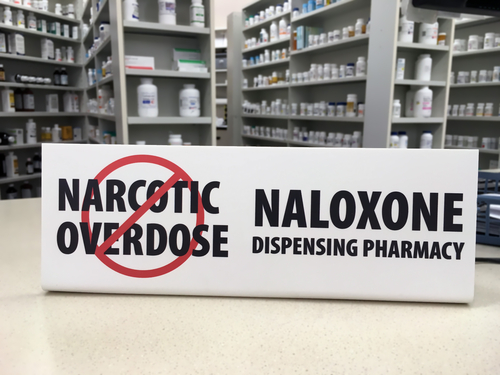
Researchers with The Pew Charitable Trusts have found that expanding access to naloxone, and changing public policy to ensure the opioid-overdose reversal drug gets into the hands of those who need it, can reduce opioid-related overdose deaths.
Additionally, researchers said, expanded access to naloxone does not pose a safety risk to patients because it can be safely administered by people other than medical professionals. Evidence shows that increasing access to naloxone does not increase the nonmedical use of opioids, as well.
As part of the issue brief, researchers said changes to public policy were needed to make naloxone available to opioid users, and the families and friends of those who struggle with opioid use disorder.
While states have worked on the issue individually, researchers said the laws need to be more uniform across the country.
“All U.S. states have enacted at least one law that expands access to naloxone,” the researchers wrote. “However, the scope of these laws differs, and not all of them ensure that naloxone can get into the hands of people most likely to experience or witness an opioid overdose. Some states have taken more innovative approaches to increase access to naloxone beyond the pharmacy: for example, by permitting naloxone distribution in community-based and corrections settings to people who use drugs and to their family and friends.”
Researchers said lawmakers and policymakers could expand access to naloxone in several ways. First, policies could be put in place to increase traditional prescriptions for naloxone, including requiring health care providers to co-prescribe naloxone for patients who are prescribed high-dose opioids, or opioids combined with benzodiazepines, and allow providers to prescribe naloxone to third parties, such as family members and friends of the patient receiving opioid prescriptions. Another option would be to change policies requiring naloxone prescriptions and allow the drug to be dispensed without a patient-specific prescription.
Another recommendation was to address getting naloxone to people who are at risk of overdose as they are leaving hospital, treatment, or corrections facilities. Policies could encourage hospital emergency departments to provide naloxone to those who come to the departments for any opioid-related illness or overdose. Additionally, treatment facilities could be required to receive funding that would allow them to prescribe or dispense naloxone to patients upon their discharge. And policies could require that inmates with a history of opioid use be provided naloxone upon their release from corrections settings.
The issue brief also recommended increasing community distribution of naloxone by permitting local agencies and organizations to distribute the overdose reversal drug to those who may be likely to witness one and to enact Good Samaritan laws that would provide immunity to those who experience or witness an overdose, which would encourage them to call 911 for help. The issue brief said mandated coverage in public and private insurance plans and negotiating with naloxone manufacturers for bulk prices could lower the cost of the drug for individuals and state governments.
Other recommendations were to allow law enforcement officers to carry and administer naloxone.
“States can develop training programs with local partners, as did the Quincy, Massachusetts, police department (QPD), when it started the first law enforcement naloxone program in the country,” the paper’s author wrote. “In 2010, following a previous-year spike in opioid overdose deaths, QPD partnered with the Massachusetts Department of Public Health to train all police officers to recognize the signs of an overdose and administer naloxone. In the year after the program was implemented, Quincy’s overdose death rate decreased by 66 percent. Between 2010 and 2016, QPD officers reversed more than 500 opioid overdoses, and the program is now a nationally recognized model for equipping law enforcement with naloxone.”
By using public policy to remove barriers to naloxone accessibility, policymakers could reduce the number of opioid overdose deaths across the country, the authors said.

